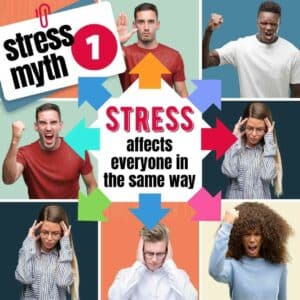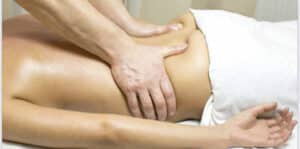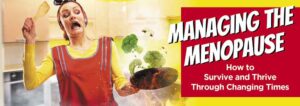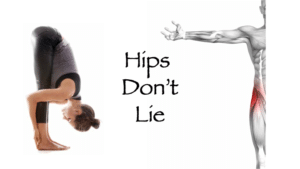I have just returned – freshly enthused – from the annual conference of one of my professional associations. Annual meetings are not usually the cause of much enthusiasm, but there were 4 great guest speakers at the conference, each leading a workshop in the afternoon. I am still buzzing with the ideas they re-introduced, and I am writing here the notes I made, in case you find some snippets of interest. This article is rather long, but feel free to skim through the sections that don’t interest you.
I have hyperlinks to the relevant sections, so you don’t have to scroll down to find what may interest you:
- Massage Research (and a beef about “soft tissue therapy”)
- Speaker: John Sharkey – Biotensegrity
- Speakers: JING INSTITUTE – massage trainers – Models of Chronic Pain
- Speakers: Jamie Barker – How therapists can alleviate the stress felt by injured athletes
- Speakers: Paula Clayton – Treating Achilles Tendinopathy
I hope you found some interesting ideas in this blog, and tried clicking the links to other websites. Feel free to point me to interesting websites that inspire you!
Massage Research (and a beef about “soft tissue therapy”)
In the introduction, the chair reported that it has been a good year for the SMA – member numbers are up, revenue is up and plans are in place to fund some good research into massage and sports performance.
There are many small studies into the efficacy of massage, often done by students for their thesis, but very few well funded large sample studies. It is difficult: no big corporate stands to make money out of the research, and massage is a very individual practice, and difficult to repeat. No 2 therapists work quite the same way. In fact, it is arguable if the same therapist can repeat treatments – they depend very much on the interaction between practitioner and client, and the relationship they build up. If 2 therapists try to do exactly the same with 2 clients, then the client will know intuitively that it is not the most appropriate treatment for them.
I feel this problem with the repeatability of treatment leads to a problem with the focus of my profession. Although the SMA is trying to get people to use the phrase “soft tissue therapists” to describe our practice, I feel this misses out on the fact that although soft tissues are the point of physical contact between therapist and client, we work together on an emotional, mental, energetic and perhaps even spiritual level, as well as physical. To limit the focus of our practice to their soft tissues can be to miss the whole person in our client. Even worse, to treat our client as a lump of meat is discounting their role in the healing process, and profoundly disempowering. I need a lot of persuasion before I start to use the phrase in my practice!
Speaker: John Sharkey – Biotensegrity
John is clinical anatomist at the University of Chester, and organises dissections for educational purposes. (Hopefully there is no other reason for them!)
He showed great video showing how tissues don’t SLIDE, they GLIDE – they are attached in a flexible way.
https://www.youtube.com/watch?v=eW0lvOVKDxE (warning – contains living dissection video of tendons – blood alert!)
The video shows how exceedingly WET we are, but John pointed out, if muscle is 79% water, why does water not come out if we mince meat? John introduced the importance Hyaluronic Acid which traps water molecules in what is called “Ground Substance” in which all soft tissues are suspended. Ground Substance can have lots of calcium salts in it, like bone, but it is still a soft tissue…living bone has tremendous bounce and bendability, which allows us to lift weights unexplained by simple muscle biodynamics.
He said much anatomy thinking is influenced by understanding of old technology:
- We think of a vertebral “column” with bones stacked on top of each other like bricks. Yet if you bend over, the “column” becomes a “beam”, suspended by a network of soft tissues.
- Archimedes’ ideas of fulcrum and levers influence how we picture muscles, bones and joints, but joints don’t have a pin in them to act as a fulcrum, they have a joint space, maintained by pressure of fluids in the joint capsule!
Buckminster Fuller, an architect, introduced the idea of “Tensegrity”, an amalgam of Tension and Integrity, to describe structures that held together with the interplay of harder shafts (not continuous) and softer ropes (continuous), like a marquee. The combination provides lift and tension/compression and transmits it through the structure. Any stress on one part of the structure will dissipate and ripple through to other parts in a wave.
Implications for massage therapists: this is a very helpful picture for a therapist, and can be a start to explaining how dysfunction in one part of our body can ripple through to other areas seemingly remote….your therapist should be working on the whole of your body to be effective, or they may be effective throughout your body by just working on one part! A paradox!
For more information or to contact John, check out www.johnsharkeyevents.com
Speakers: JING INSTITUTE – massage trainers – Models of Chronic Pain
These skilled trainers from Brighton introduced some information about chronic pain, and outlined their protocol for working with clients in chronic pain. All this and more is in their new book: “Massage Fusion, the Jing Method for the treatment of chronic pain”.
They pointed out 45% of the UK population report experiencing chronic pain – it is normal!
In the US it was noted 43% of clients seek massage for medical reasons – the medical model for massage is a strongly held perception there.
Our understanding of chronic pain is changing quickly. The old “Cartesian” model suggested it is a one-way transmission system from the nerves to the brain. So we often assume pain is caused by tissue damage, and problems with the structure, eg. Herniated discs, joints “out”, postural abnormalities.
This model guides the therapist to focus on “amending the structure”.
And yet, tissue damage can exist without pain:
MRI studies have shown
- 52% of asymptomatic patients have bulging discs
- 34% of asymptomatic patients have rotator cuff tears – 15% had full rotator cuff tears with no restriction to full Range of Motion!
- 69% of asymptomatic patients had labral hip tears
- 61% of asymptomatic patients had meniscal tears in the knee
- Scoliosis in up to 80% of patients has no correlation with pain.
As John Sharkey said in a previous presentation “MRI is a snapshot of a telephone, but it doesn’t tell you if it is ringing!” A great quote I hope to remember the next time a client comes to me and says “The MRI said I have x and that is the cause of my pain”…
(I am sorry I did not get the source for this data in the presentation)
Conversely, pain can exist without damage
- 85% of Low Back Pain is classified as “non-specific” – with no discernible cause
- RSI under MRI shows no discernible tissue damage
- Phantom limb pain is reported in 60-80% of amputees (eg. Morning stiffness)
This leads JING to question the whole focus of bodywork on realigning structure, something loved by many chiropractors and structural integrators (Rolfers). John Sharkey disagrees, however, saying there is a place for postural/gait assessment to identify where insults to the body have affected fascia over time.
The modern model of pain includes inputs like Prior Experience, Attention/Expectation, Mood (Anxiety/Depression), Neurochemical and structural changes, all impacting on Peripheral and Central Nervous System sensitisation. Central Sensitisation is where the brain turns up the “volume” of pain signals, and it is a feature of all chronic pain.There are psychosocial factors too: Emotions, Catastrophising, pain-related beliefs(fear avoidance), Class/Race/Gender factors, work or family support issues.
For instance, RSI has a very strong correlation between feeling powerless at work.
Implications for massage therapists: I think massage therapist have a role well beyond being skilled technicians in “soft tissue manipulation”. Systemic massage to help clients relax, visualis good health, get in touch with their feelings and take charge of their wellbeing. We are therapists, not just technicians.
For more information, check out their website www.jingmassage.com which has lots of tips and freebies!
Speakers: Jamie Barker – How therapists can alleviate the stress felt by injured athletes
Jamie is an Associate Professor of Applied Performance Psychology at Staffordshire University. He introduced a psychological model to help focus treatment with an injured athlete, and help them see CHALLENGES rather than THREATS.
| Stressor | ->Demands | -> Resources | -> Psychological & Emotional Responses | -> Performance |
| decision making | ||||
| Effort | Self confidence | incl. heart rate | cognitive functioning | |
| Uncertainty | Perceived control | EpinephrineNorepinephrineOr Cortisol | Task Engagement | |
| Danger to esteem | Approach or Avoidance focus | Changes to Vascular resistance | Skilled performance | |
| Emotions perceived as helpful or unhelpful to performance | Physical functioning | |||
|
These factors can be measured |
||||
Demands are very fixed, Resources can be changed.
Developing a “Challenge” strategy:
A. Awareness of performance under stress
Athletes are encouraged to fill in a questionnaire including discussion points like:
- How do I perform under pressure and stress?
- How does my body feel when under pressure and when I am stressed?
- What are my thoughts when under pressure and feeling stressed out?
- What demands are placed on me when under pressure and feeling stressed?
- What pressure situations am I likely to experience in the forthcoming months?
B. Developing Self confidence: visualisation and reflection
Athletes are asked to:
- Recall a past successful performance and reflect on what it was about YOU that helped you succeed.
Write down all the features of your past successes that will help you with future challenges, including sights, sounds, feelings and even smells to make it realistic. - eg: Past success, Being Encouraged, Seeing others succeed, emotional state
- Self confidence can be built up by: peers, colleagues, mentors, preparation
- Reflective Practice: 3 things I did well, 1 thing I could do differently
- Control the Controllables:
- Preparation, develop strategies for difficult situations, Emotions
- Approach Focus: I want to succeed, my performance is under my control, the 3 things I need to do to succeed are… , I can perform well today
- If there is Avoidance Focus: focus on what can control.
Implications for massage therapists: our role is well beyond just “soft tissue therapy”, but is about treating the whole person in any situation, so they can function better.
For more information, check out Jamie’s new book: “Tipping the Balance – The mental skills handbook for athletes” Martin Turner & Jamie Barker available from Amazon for Kindle or print.
Speakers: Paula Clayton – Treating Achilles Tendinopathy
Paula is a SMA Director and an experience Soft Tissue Therapist, working with athletes at world championship level and premier football clubs.
She introduced her protocol for treating a diagnosed Achilles Tendinopathy:
She said we don’t really know the cause of tendinopathy – chronic inflammation of a tendon, with associated vascularisation and nerve infiltration. But it is a frequent cause of pain and impairment, particularly in achilles tendon and wrist flexors/extensors at the elbow (tennis elbow, golfer’s elbow).
The outcome measure she uses to monitor pathology and recovery is the “Lunge Test”: Stand facing wall with toes 12-14cm from wall. Bend knee to touch wall with heel on floor. The angle of shin towards wall is the measure.
- Myofascial Release
Down calf, across calf, longitudinally medial, lateral and middle of plantar foot (3 knuckles), then lateral below peroneal tubercle.Then use stainless steel tool (eg. Graston Technique) to friction the fascia. Manual methods are also indicated. - Give patient VISA-A to monitor progress http://www.ouh.nhs.uk/oxsport/information/documents/visa-a.pdf
- She recommends Patterson medical tape to tape ankle in plantarflexion (to reduce dorsiflexion for 3 days after treatment):
Tape 1 – plantar and rear calf with foot plantarflexed
Tape 2 – same but extending further along foot and calf
Tape 3 – across heel to keep tape attached behind Achilles - Maybe a Strasburg sock for wearing at night after tape is removed.
Paula practices in Shropshire, and for more information see http://www.stt4performance.com/






